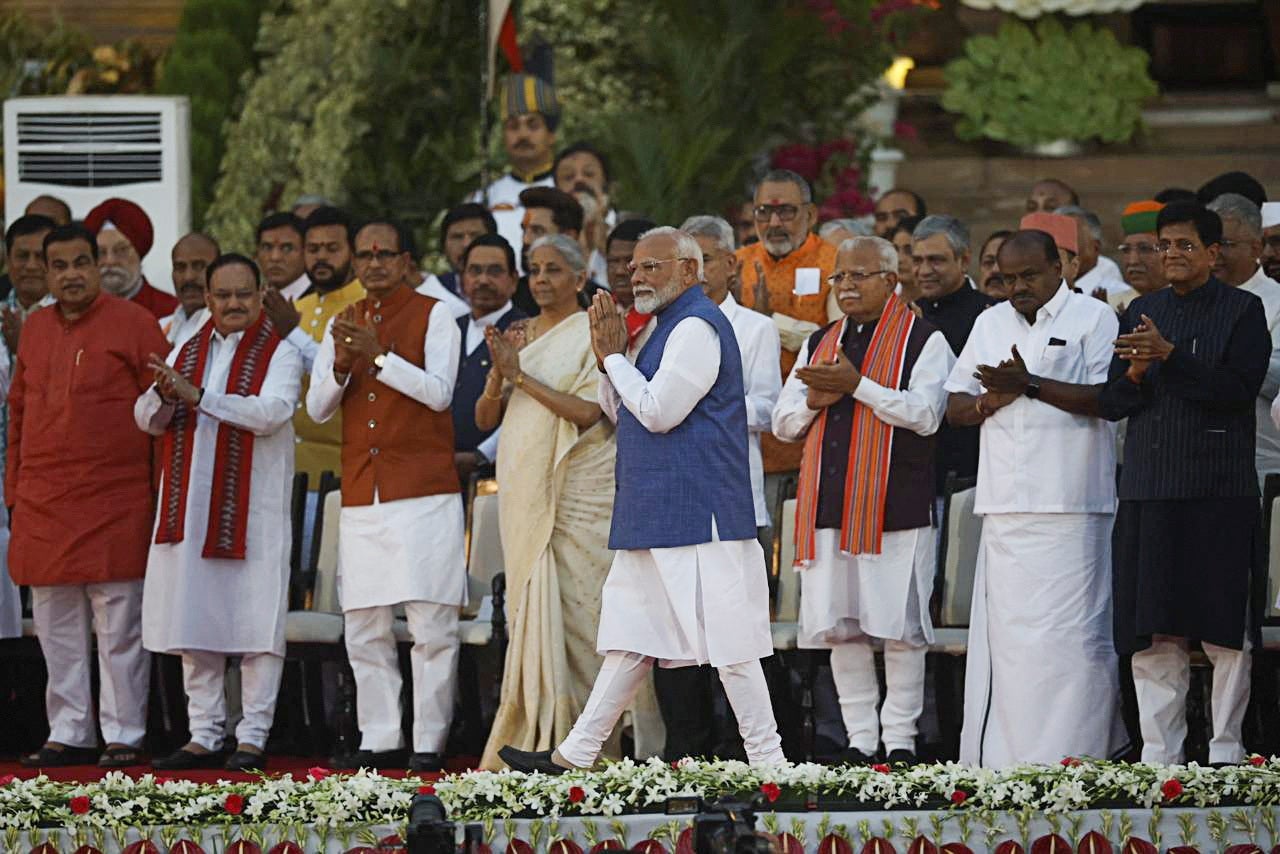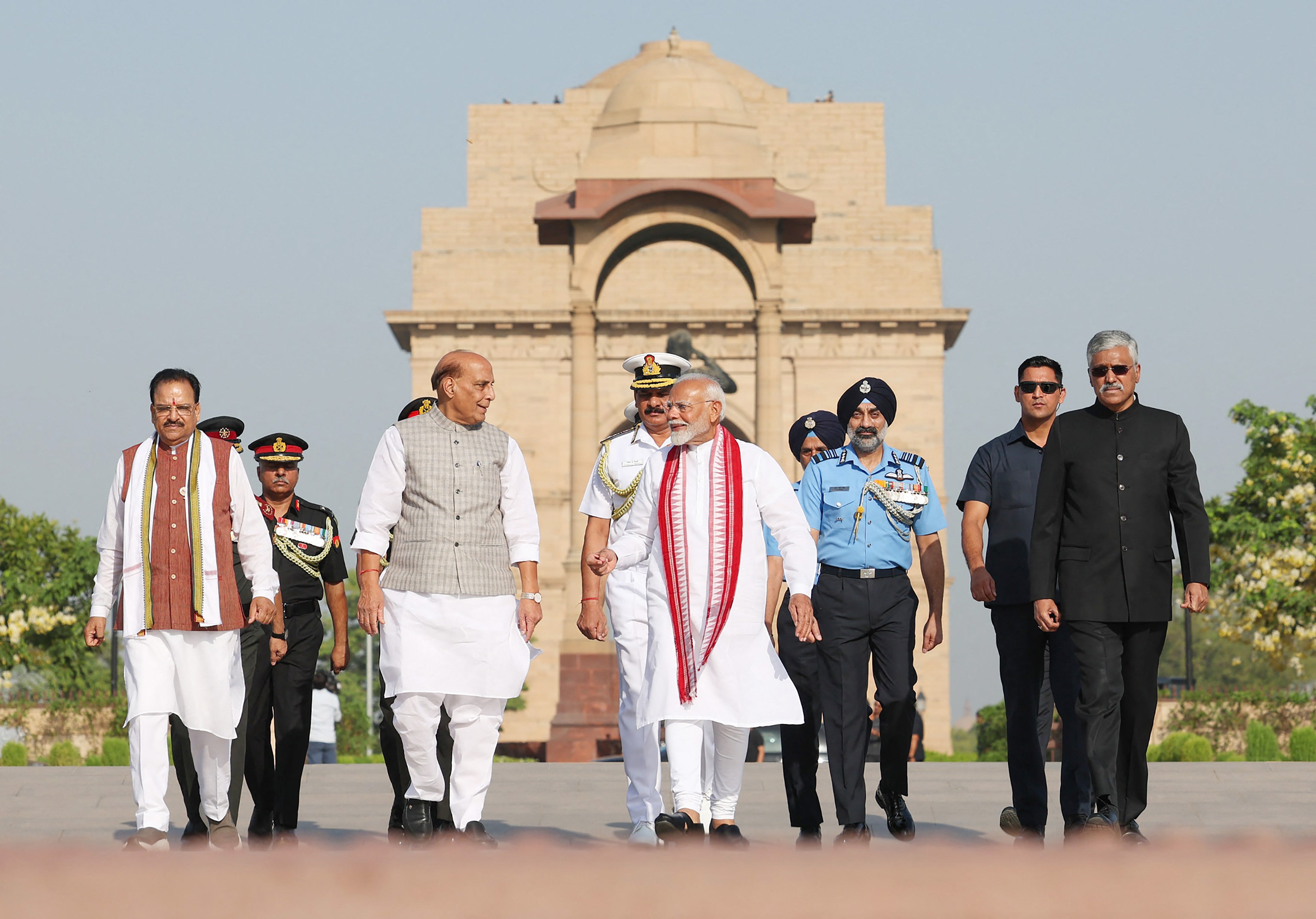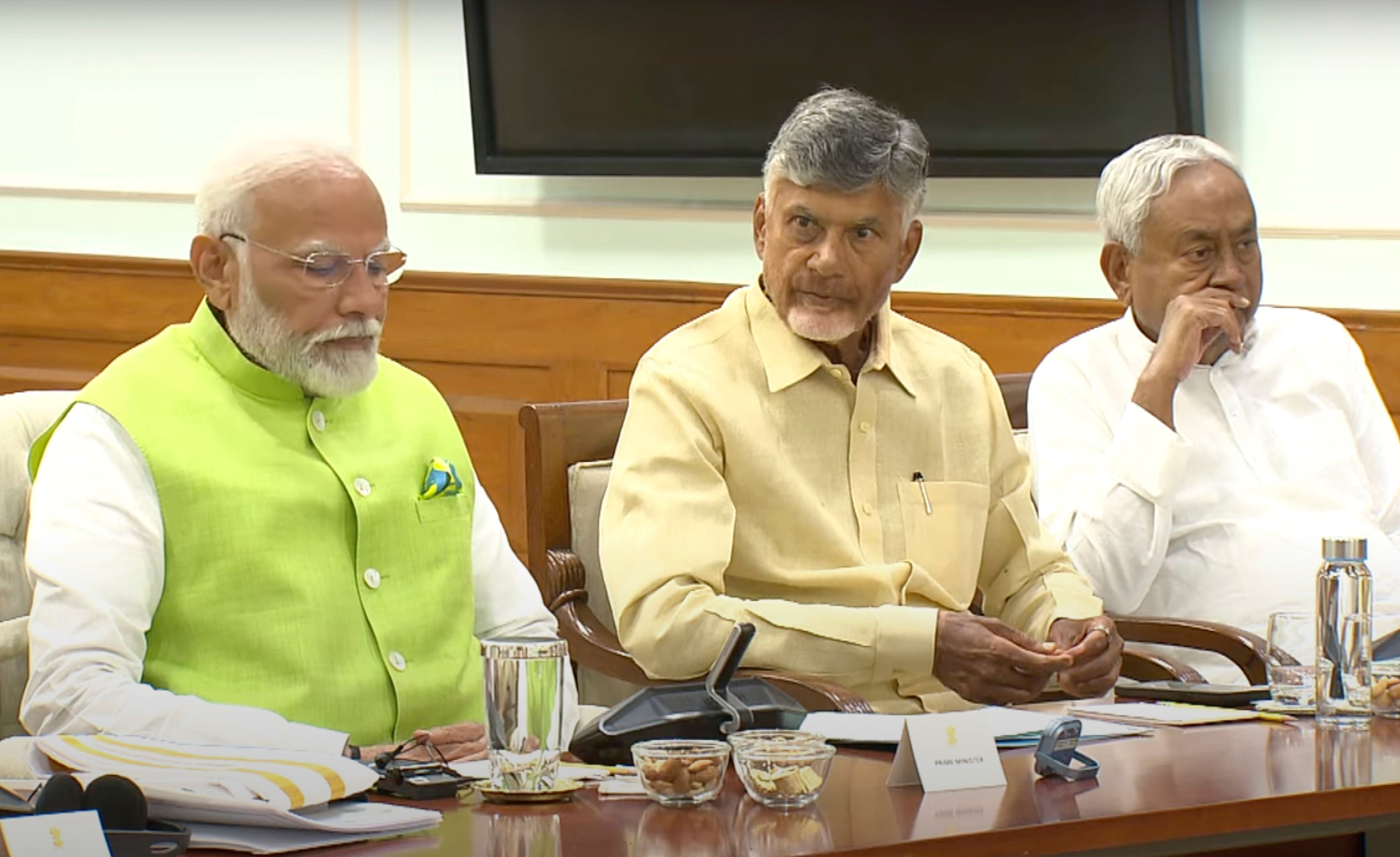Narendra Modi took the oath of office on Sunday to become India’s prime minister for a third consecutive term, extending his leadership for the next five years albeit with a diminished grip on power after an electoral setback.
President Droupadi Murmu administered the oath of Mr Modi, followed by the swearing-in of top federal ministers at the presidential palace in the capital Delhi.
Thousands of guests, including foreign heads of countries from seven of India’s neighbourhoods and top Bollywood celebrities, marked their presence at the ceremony in Delhi.

Maldives president Mohamed Muizzu, Sri Lanka’s Ranil Wickremesinghe, and Bangladesh prime minister Sheikh Hasina were among the leaders who took the front seats after landing in Delhi on Sunday.
Nepal’s prime minister Pushpa Kamal Dahal, Bhutan’s leader Tshering Tobgay and prime minister of Mauritius, Pravind Jugnauth, were also welcomed in Delhi.
Mr Modi’s swearing-in ceremony marks the beginning of his third five-year term, making him the second prime minister in India after Jawaharlal Nehru to lead the country for three consecutive terms.
“Honoured to serve Bharat,” Mr Modi posted on X/Twitter, minutes before he was sworn in, referring to India’s name in Indian languages.
His third term holds significance as it is the first one in which he is relying on a fragile coalition with partners who are not averse to switching support after Mr Modi’s Bharatiya Janata Party (BJP) failed to win a majority in an electoral setback.
The BJP won only 240 seats, less than 272 seats required by any political party to form a government, making Mr Modi dependent on the BJP-led alliance National Democratic Alliance (NDA) that won the most number of seats.
The NDA coalition got 293 seats, some 61 ahead of the opposition INDIA alliance led by the Congress party.
Mr Modi, who had made the boisterous claim of his party winning 400 seats in a sweeping victory, was forced to cut rushed deals with regional allies who gained prominence as “kingmakers” for giving support to the party.
A new cabinet has also been sworn in and includes many new faces while retaining some of the major figures from his previous cabinet in the heavyweight portfolios.
Mr Modi was followed by senior ministers in the previous government: Rajnath Singh, Amit Shah, Nitin Gadkari, Nirmala Sitharaman, Subrahmanyam Jaishankar, and Piyush Goyal, among others. Their portfolios are expected to be announced after the swearing-in.
The decision on the new cabinet came after an 11-hour-long meeting at the prime minister’s residence on Saturday in the presence of strategist Amit Shah and BJP president JP Nadda.

Ahead of the highly anticipated swearing-in ceremony, Mr Modi visited and paid homage to freedom fighter Mahatma Gandhi at his memorial Rajghat in Delhi.
He paid tribute to former BJP prime minister Atal Bihari Vajpayee and visited another BJP stalwart, LK Advani, at his residence.
In the afternoon, Mr Modi also invited members of parliament who are part of the new cabinet, dubbed as “Modi 3.0” in Indian media. He hosted a high tea at his residence and interacted with the ministers.
The surprising election results upended widespread expectations before the vote. The populist leader has been accused by critics of leading the country with politics of polarisation and using all the power levers, including state agencies, at his disposal to target his critics.
Analysts have said it is uncharted territory for Mr Modi who has always led governments with a majority even during his time as Gujarat chief minister while singularly enjoying the spotlight and relevance.
The politics of coalition does not fit in well with “Modi’s brand of assertive and go-it-alone politics”, said Michael Kugelman, director of the Wilson Center’s South Asia Institute.

“These results show that the Modi wave has receded, revealing a level of electoral vulnerability that many could not have foreseen,” said Mr Kugelman.
Two regional stalwarts N Chandrababu Naidu of Telugu Desam Party (TDP) and Nitish Kumar of Janata Dal (United)’s emerged as kingmakers after they were courted by the BJP to form the government.
These leaders have already put forth demands, including changes in contentious laws, and more funds for their states and federal cabinet positions during negotiations on forming a new coalition government.
While Mr Modi has embarked on the third term with the new government it is to be seen how the leader will navigate the pulls and pressures of a coalition government.


